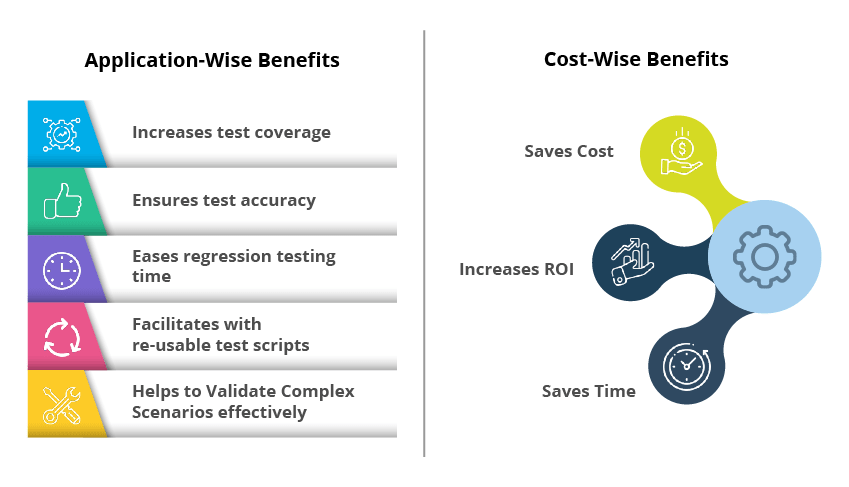The financial press spent most of 2022 predicting a recession that still has not arrived. Even so, recession risk remains. Uncertainty is present in global inflation, the ongoing war in Ukraine, and pandemic-induced hiring and firing job shuffling in the US. Whether the recession arrives or not, it makes sense for companies to take defensive action to cut costs in software development.
This post offers five areas to consider for cost savings in software development projects, starting with an overall assessment of the existing workflow.
Streamline Software Development Team Operations
In software development, time is money. That seems (painfully) obvious, so let's break it down. Streamlining operations is key. It may be apparent where certain costs are too high. What is less clear is, why? Where is time being wasted in the process?
For example, as we touch on below, team members can look for opportunities to automate tasks or use existing tools and frameworks whenever possible instead of developing bespoke solutions from scratch.
Sometimes you have to pause to put standards in place to move faster. Teams that standardize their development processes and tools can reduce maintenance and troubleshooting over time.
The first step in cutting costs is to look at the overall workflow to identify expertise gaps, redundancies that waste time, manual processes that increase errors, or anywhere that progress stalls due to friction.
Outsourcing, Near-Shoring, and Team Augmentation
Globalization opened up new models of how work gets done. Outsourcing specific tasks to teams in other countries is now a common practice to add efficiency and cost savings to software development. It frees up local resources for other vital functions and reduces internal costs associated with hiring additional personnel or developing new programs. Outsourcing software development can lead to faster turnaround times, allowing businesses to market their products and services faster.
In recent years, near-shoring has emerged as an attractive alternative to outsourcing. With near-shoring, teams operate in the same country or in similar time zones, making it easier to have team meetings, spur-of-the-moment check-ins, and one-on-one consultations.
Not every project needs an entire team added to the mix. Sometimes the existing team just needs to fill a gap in expertise. Team augmentation is another way of adding expertise without a long-term hiring commitment or outsourcing contract.
Hiring specialists allows teams to access expertise quickly. Depending upon the situation, team members can either work remotely or join the office environment.
Cut Costs by Re-Negotiating Better Terms with Outsourcing Vendors
The current economic uncertainty has its roots in the global pandemic. Companies have been on alert to rising costs since 2021. In fact, the Boston Consulting Group (BCG) reported in 2021 that 62% of companies were considering renegotiating their outsourcing contracts.
If you already outsource, now might be a great time to renegotiate. When negotiating with software vendors, here are some tips:
- Identify the essential priorities and features of the project to help focus negotiations and set clear expectations for outcomes.
- Thoroughly research vendors' current situation by searching for industry updates in the news and checking with your network. A thorough understanding of your vendor’s situation can increase your negotiating leverage.
- Create a visual comparison, such as a spreadsheet, of pricing models and obtain multiple quotes from different vendors.
- Negotiate discounts and payment terms and stay organized throughout the process by tracking negotiating points with each vendor.
Taking the time to map out and track a negotiating strategy can result in more savings and a better outcome overall.
Automating Software Testing and Deployment Cuts Costs
Much like implementing SOPs in other systems, automating some areas of testing and deployment may be a task teams put off because it takes setup time on the front end.
However, automating software projects can save developers both time and money over time. Teams can implement techniques such as scripts, macros, and artificial intelligence to automate programming tasks such as code refactoring, unit testing, debugging, and security checks.
The visual below shows that automating benefits the development process while increasing cost efficiencies as well.

Teams not only save time on implementation, but they also save time spent fixing mistakes. Automating speeds up workflow with more accurate results and tracking, allowing for quick bug fixes and reducing time to market.
Automation also reduces the need for manual labor in the development process, allowing developers to focus on more critical tasks. Teams can deploy applications faster, with fewer errors and more reliability, reducing the need for costly post-production fixes.
Use Open-Source Software to Cut Costs in Software Development
Open-source solutions are often free, allowing developers to reduce their costs significantly. Companies can avoid investing in expensive proprietary solutions when an open-source solution serves their purposes.
Open-source doesn’t have to mean cookie-cutter. Open-source solutions are often highly customizable and can be adapted to meet the specific needs of a project.
Many open-source tools have low maintenance requirements and few associated costs. This means the upfront cost of using an open-source solution is much lower than purchasing a proprietary solution.
Open-source software does come with a few caveats due to security risks associated with using the software. Teams should have a mitigation plan for security vulnerabilities since anyone with access can view and modify the underlying code.
Having a plan for open-source security will help companies save money while still shipping secure code.
Moving Ahead
Planning for uncertainty is a balance between cutting unnecessary costs while being sure to fully support the people and functions that are crucial to success. Cost-cutting works best when companies begin with a strategic assessment geared toward an integrated outcome.
At Sharkbyte, we have years of experience helping companies with software development strategy and implementation. Contact us today to get started with recession-proofing your software development strategy.
Checklist for Cutting Costs in Software Development
- Identify Friction: Streamline software development
- Efficiently Fill Gaps: Consider outsourcing, near-shoring, or team augmentation
- Cut Contract Costs: Re-negotiating outsourcing contracts
- Streamline Workflow: Automate software testing and deployment
- Leverage Free Resources: Strategically use open-source software



